ELA appreciates the many wonderful images submitted to this year’s Spotlight on Natives Photo Contest. The contest presents an invitation for people to discover the beauty and utility of native plant species. This year, photographers from across the country submitted nearly 200 images. Each sought to capture the special allure of native plants – the unique structure of trunks, stems, leaves, blossoms, seeds; the juxtaposition of native plants in groupings; and the interaction of pollinators with native plants.
It has become a tradition for three winners in the prior year’s Spotlight on Natives contest to judge entries for the current year. The difficult task this year was given to Becky Laboy, Sundaura Alford-Purvis, and Richard Rappleyea. After reviewing an outstanding array of images, they recognized three photographs as Best in Show, and gave two 1st Place and two Honorable Mention awards in each of three categories:
- Plant Groups
- Plant Species
- Pollinators and Native Plants
Becky noted that it was “an honor to judge the Ecological Landscape Alliance’s 2021 Native Plant Photo Contest!” Her initial “winning” selections were guided by “beautiful colors, crisp details, the ‘story’ told by the photo, and especially the emotions evoked by the images.” However, the group discovered there was little overlap between photos selected by the three judges, lending credence to the adage that “beauty is in the eye of the beholder,” according to Becky. Sundaura agreed that “The hardest part of judging any contest like this is deciding between all of the amazing submissions.” Ultimately, Becky thought, “It was enjoyable and enlightening to hear the other judges’ opinions as to why they selected a certain photo, and soon it became an easier task to narrow the field and determine winners.”
Sundaura was “happy to see native plants being photographed with the same attention to their beauty that garden varieties are so often treated to. Showing their personalities, exuberance and how they attract so very many native species to the garden is a great way to inspire others to create gardens filled with native plants.” Her final bit of advice to all the contest entrants, “Whether or not the photo you submitted made it to the top of a category, please keep taking photos and sharing them far and wide.”
Becky agreed, “Your photos showcase the beauty and diversity of native plants and emphasize their extreme importance to pollinators and to humans. Hats off to all the photographers who submitted photos to this year’s contest. Every single photo, and the keen eye and effort of the photographer behind it, was admired and appreciated. I’m truly inspired!”
Congratulations to our Best in Show and 1st Place winners in all categories; each will receive a one-year ELA membership. Thanks and congratulations as well to those earning honorable mentions. They will each receive a $50 credit for ELA books and other merchandise. And thank you to all of the photographers who submitted their beautiful and often amazing images. Although not every entry could win top recognition, many additional photographs will be featured in the ELA Newsletter and on the ELA website in the coming months.
The Winners Are
Best in Show – Three-Way Tie
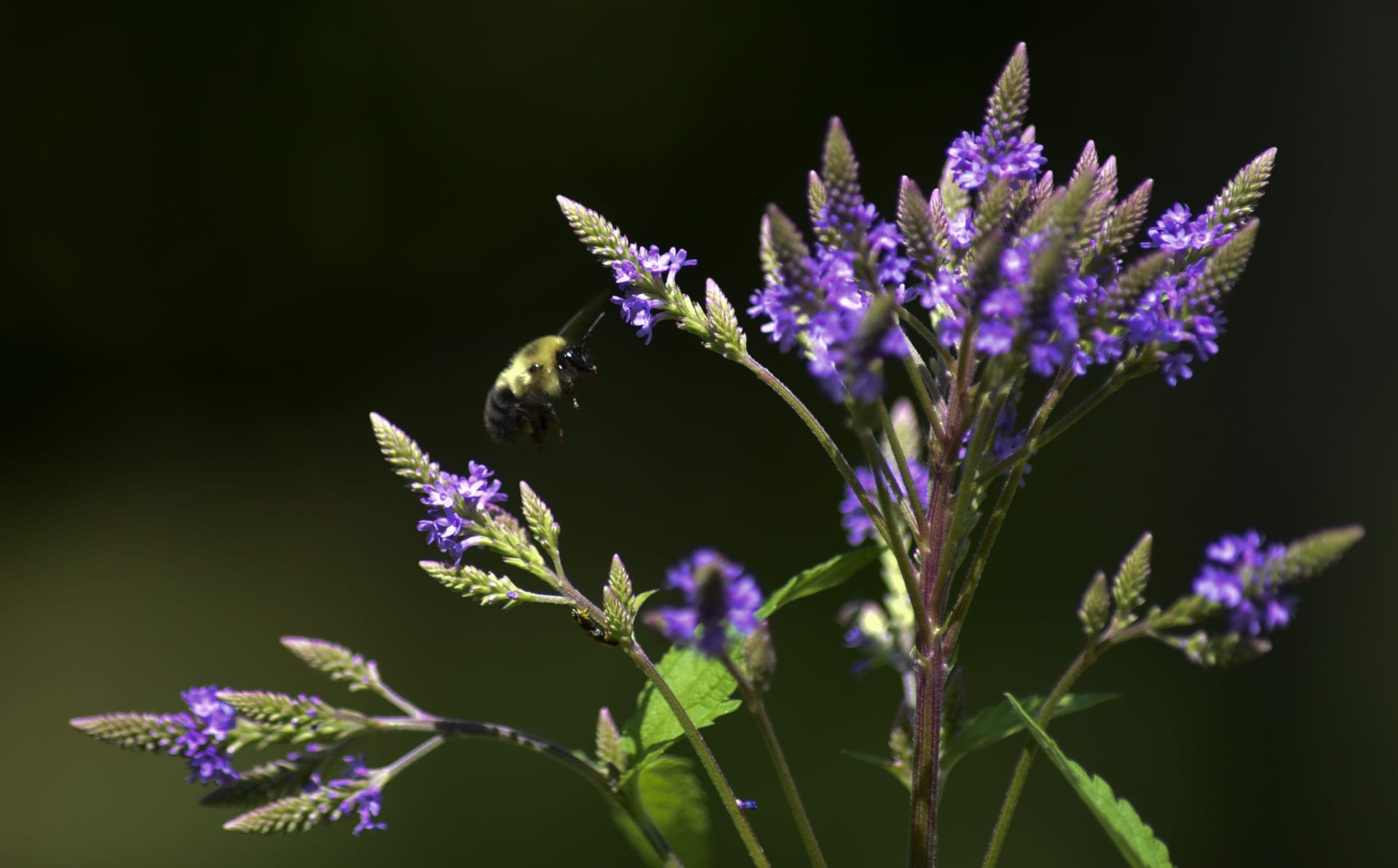
Allan Amioka: Verbena hastata
Photographer: Allan Amioka, Freelance Graphic Designer
Photograph: Verbena hastata, South Berwick, Maine
Indistinct background forms darkened by tree shadow provided contrast for the sunlit, delicate details of this Verbena hastata and one of the many pollen-seeking insects this plant attracts.
Judges’ Comments: I’ve had a soft spot in my heart for Blue Vervain ever since they arrived one summer in my urban yard without any assistance from me. Their rich color and intricate form are both a beautiful addition to the garden and popular with many pollinators. This photo captures them in exquisite detail.
Best in Show – Three-Way Tie
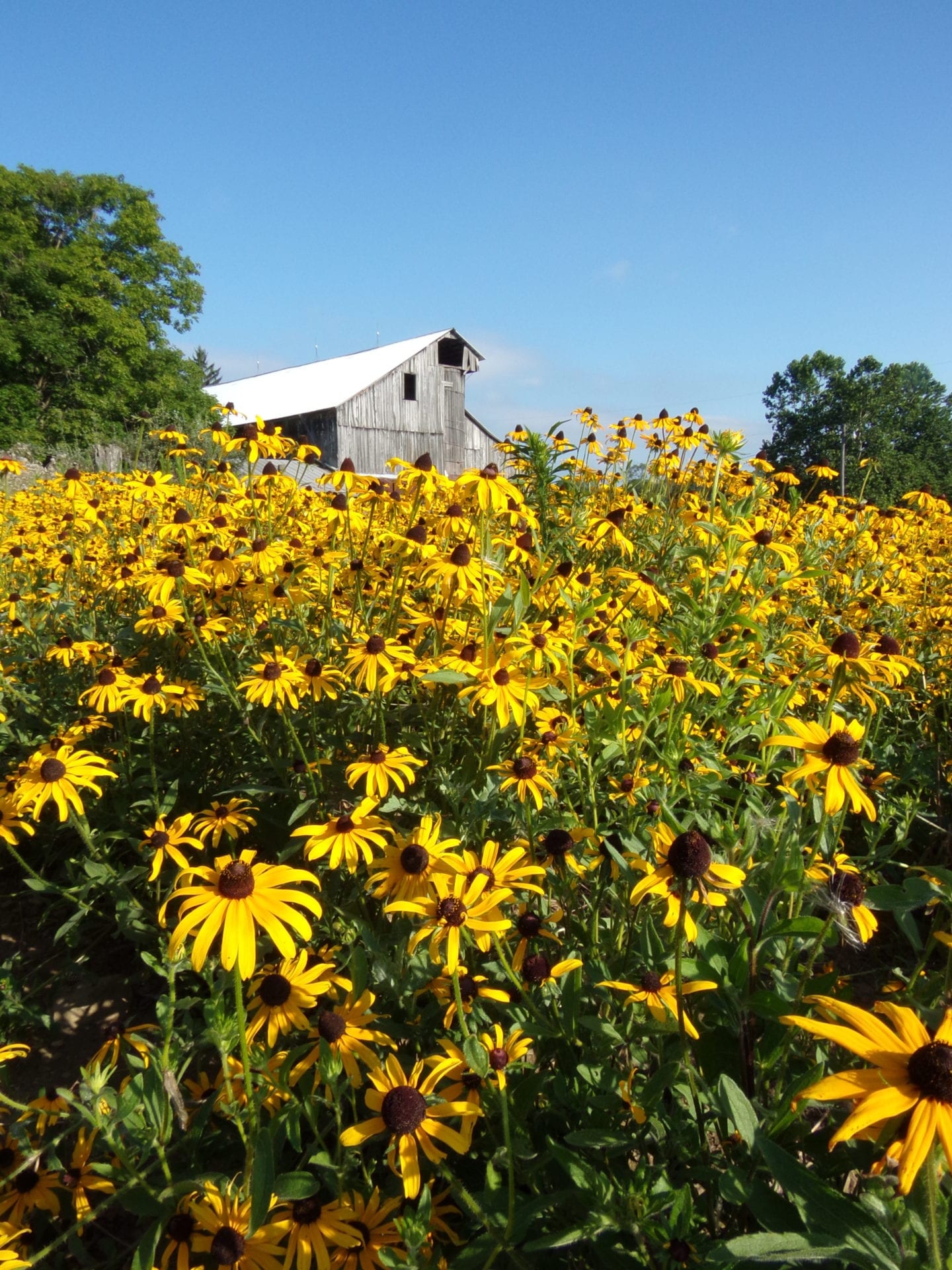
Mark Fiely: Rudbeckia hirta
Photographer: Mark Fiely, Horticulturist, Ernst Conservation Seeds
Photograph: Rudbeckia hirta, Crawford County, Pennsylvania
I took the photo of Rudbeckia hirta at 9:06 am on 27 July 2020 at an Ernst Conservation Seeds production field located between Meadville and Conneaut Lake, PA. The property belonged to a co-worker’s grandfather and had been a dairy farm. I originally shot the photo as a gift for this co-worker, one that would connect her grandfather and her career together.
Judges’ Comments: Sunflowers in a meadow, a barn, and blue skies above – great composition! I’d hang this photo in my house!
Best in Show – Three-Way Tie
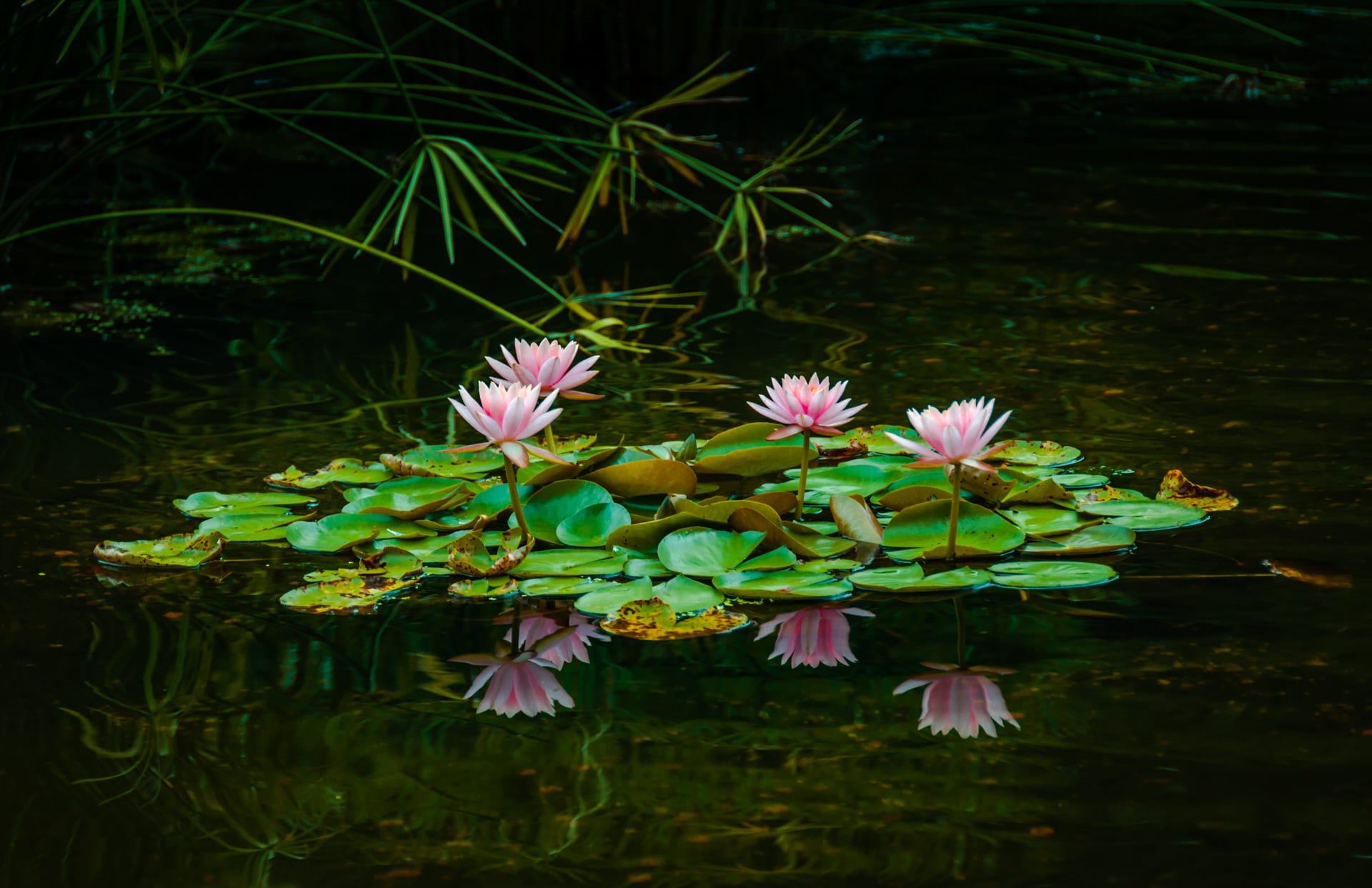
Jerry Harris: Nymphaea odorata
Photographer: Jerry Harris
Photograph: Nymphaea ordorata, Central Park, New York City
I took this photograph several years ago while visiting New York City with my family. We were walking through Central Park and I was amazed to see such healthy flowers in the middle of the city.
Judges’ Comments: An exquisite photograph. Strong composition, color, balance and contrast are all present in this one image. The lily pads convey tranquility and a true sense of calm.
Plant Grouping – 1st Place Winner (Tie)
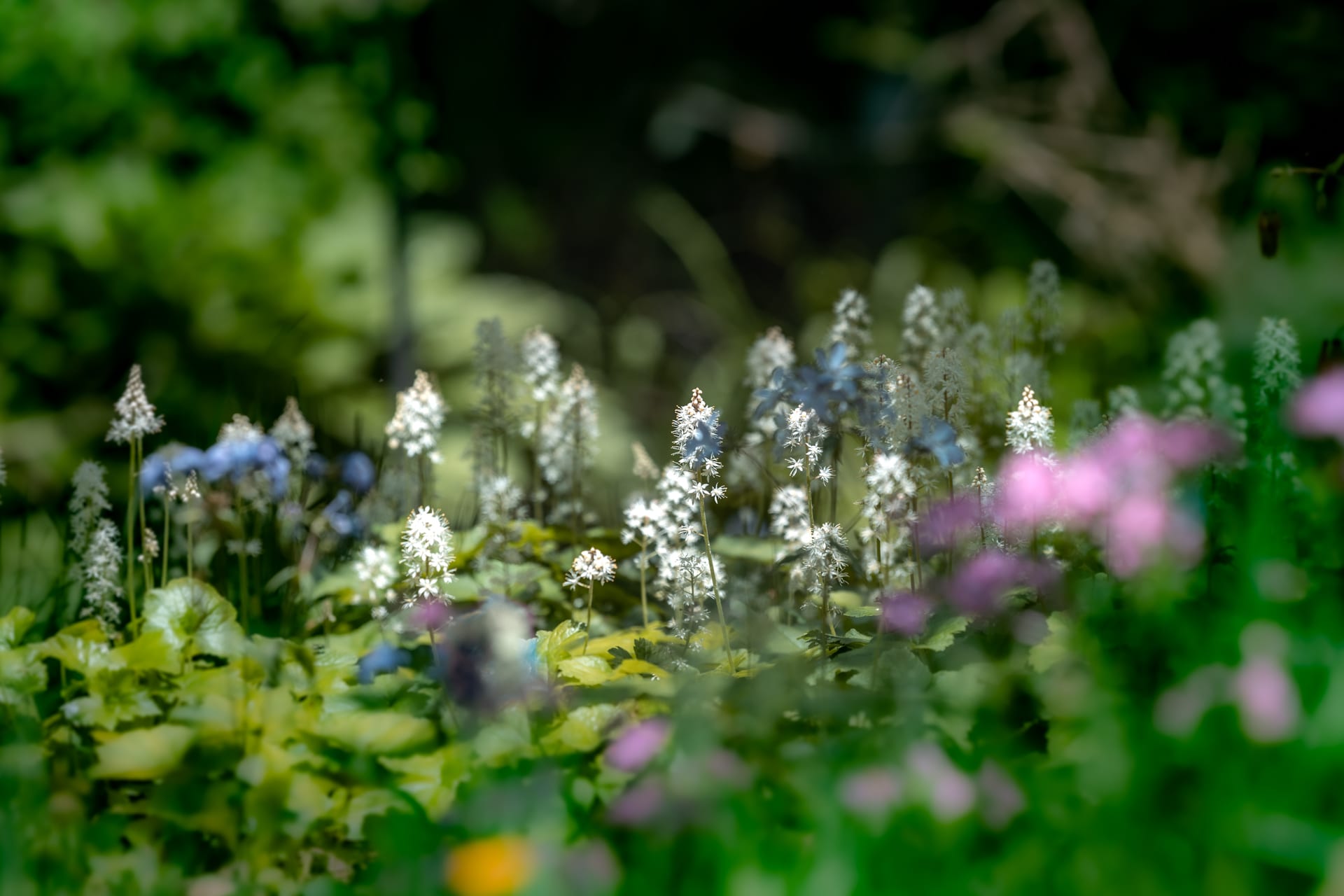
Jerry Harris: Tiarella cordifolia
Photographer: Jerry Harris
Photo: Tiarella cordifolia, Lexington, Massachusetts
My wife is an avid gardener. She planted the Tiarella cordifolia last year. I had to lay flat on the ground to capture this angle of the flowers.
Judges’ Comments: Strong composition with a good mix of wildflowers. Pleasing detail that creates an ethereal image. The Tiarella blooms are crisp and clear, contrasting well with the shaded background and a good use of depth of field helps them stand out among the other plants. There are hints of other blooms as well, creating a composition that could inspire similar plantings in other gardens, with Geranium maculatum and Phlox divaricata as two possible companions for the Tiarella.
Plant Grouping – 1st Place Winner (Tie)
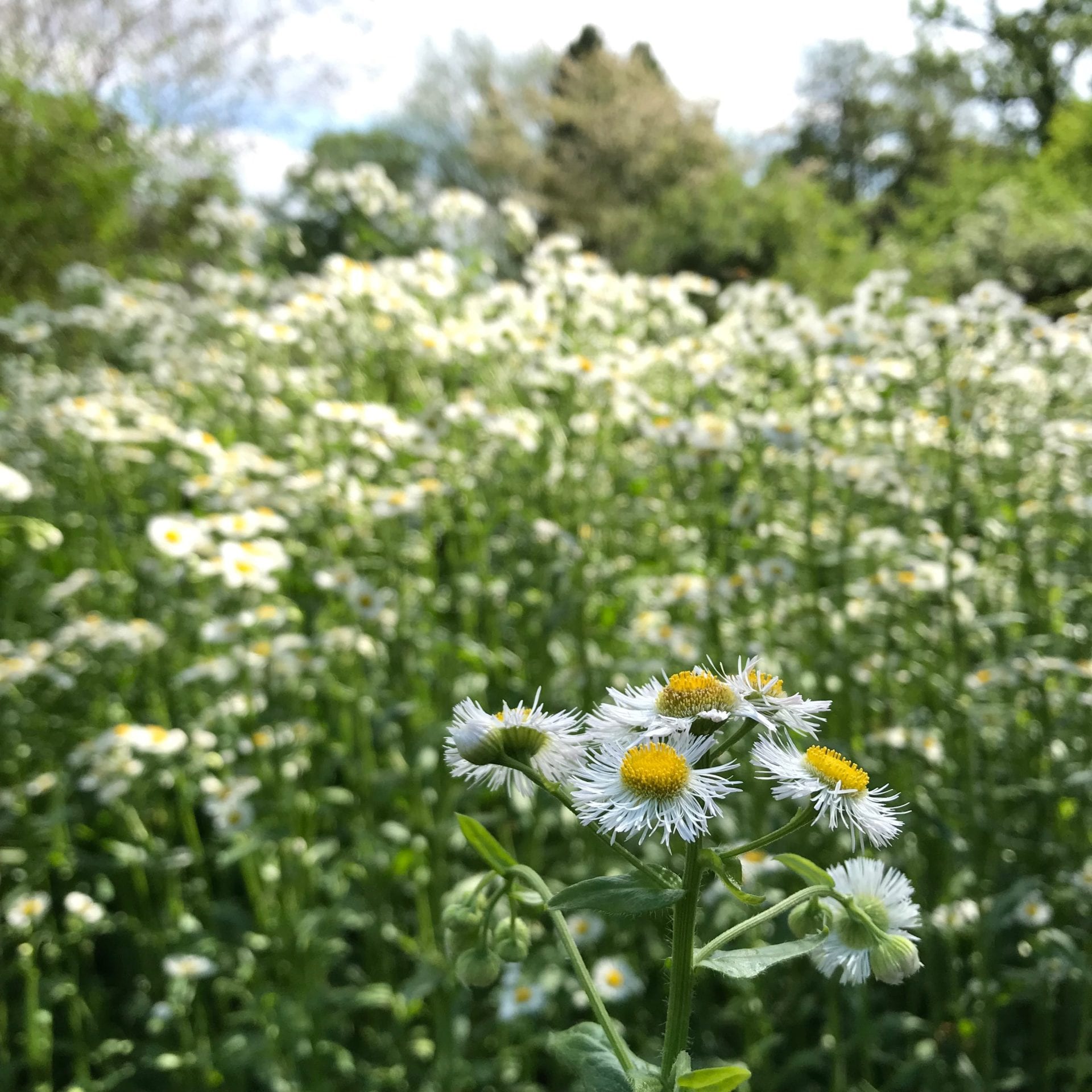
Kaitlin Hay: Erigeron annuus
Photographer: Kaitlyn E. Hay, Visual Arts Teacher, The National Cathedral Elementary School
Photo: Erigeron annuus, Tudor Place, Georgetown, Washington, DC
At Tudor Place in Georgetown, the gardeners have made an active effort to preserve the historical design and plantings, but also incorporate more native species to attract pollinators. This small area of Erigeron annuus, known as fleabane, was a lovely counterpoint to the more formal boxwood parterre and rose garden just beside it– and the butterflies and bees certainly appreciate this plant!
Judges’ Comments: As a plant photographer, I know that it can be hard to capture the fine details of a flower, while also giving an impression of the overall height and form of the full plant. This image manages to capture both, while also showing off an underappreciated species that is far too often dismissed as a weed when they invite themselves to the garden party.
Plant Grouping – Honorable Mention
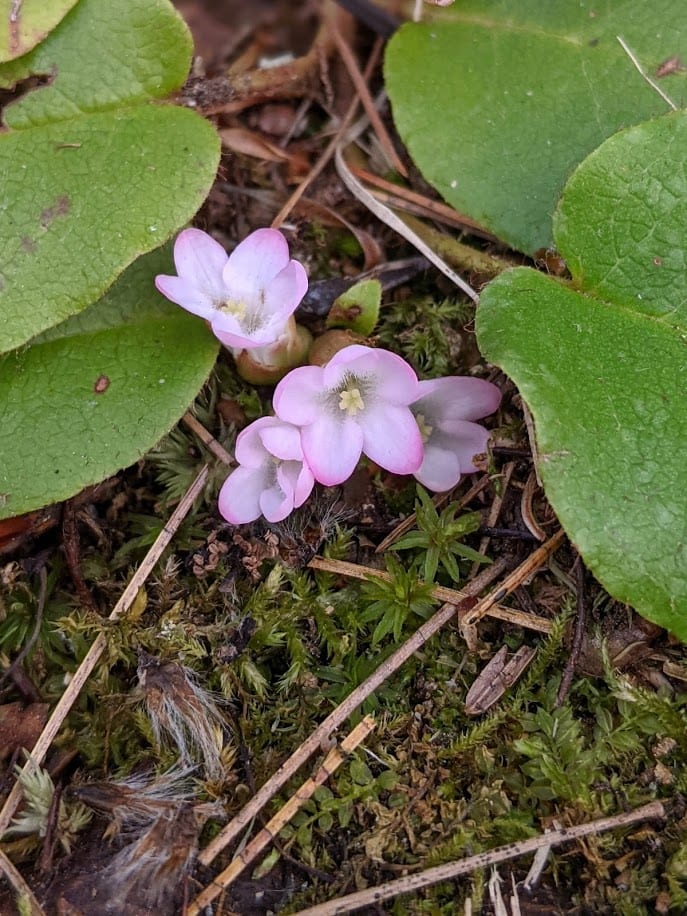
Debbie Broderick: Epigaea repens
Photographer: Debbie Broderick
Photograph: Epigaea repens, Limerick, Maine (York county)
This beauty was growing amongst the mosses at the bottom of my yard on Lake Arrowhead. The delicate pink blush stood out attractively against the surrounding greens.
Judges’ Comments: Beautiful spotlight on this tiny flower within its tiny world. Often overlooked by humans, small, fleeting, spring flowers don’t seek the limelight. The photographer timed this shot perfectly, bringing our attention to May Flower’s magnificent shades of pink, delicate shape, and demure appearance. I find it hard to turn my eyes away.
Plant Grouping – Honorable Mention
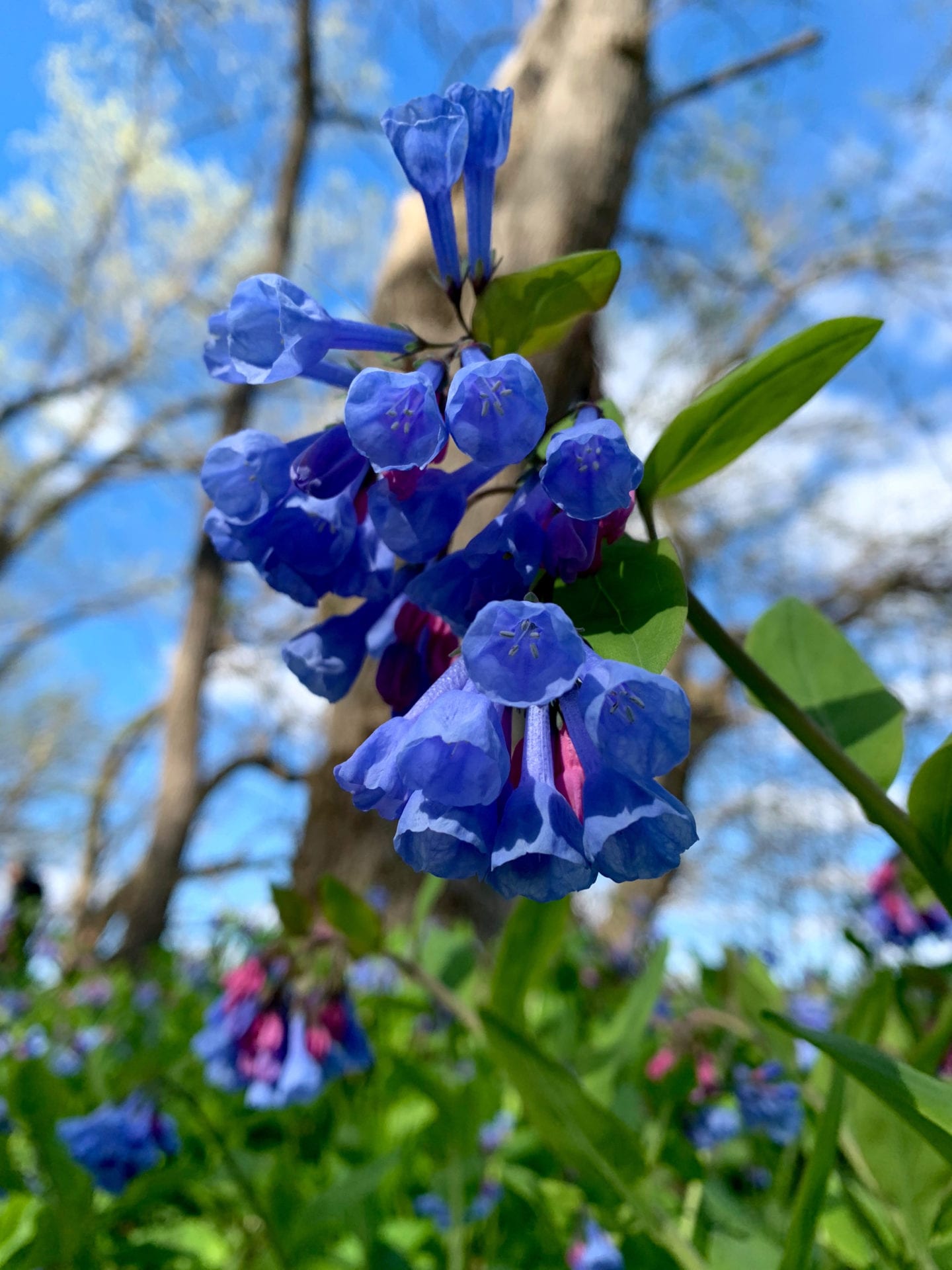
Alexandra Hay: Mertensia virginica
Photographer: Alexandra Hay, Professional Practice Manager, American Society of Landscape Architects
Photograph: Mertensia virginica, River Bend State Park, Great Falls, Virginia
Over Easter weekend, my family went to River Bend State Park for an outing from Washington, DC. It was our first visit to the park, and we had incredible luck with our timing: not only were the bluebells in bloom (another visitor we passed in the parking lot excitedly told us which way to go to see them), but we also saw a family of eagles (two eaglets in the nest and the parents coming and going). It was an absolutely beautiful day, and it was the most bluebells I’d ever seen in one spot.
Judges’ Comments: Tangled up in blue! Bluebells and blue skies – the photographer captured the beautiful blue hues of this magnificent plant in its natural woodland environment.
Plant Species – 1st Place Winner (Tie)
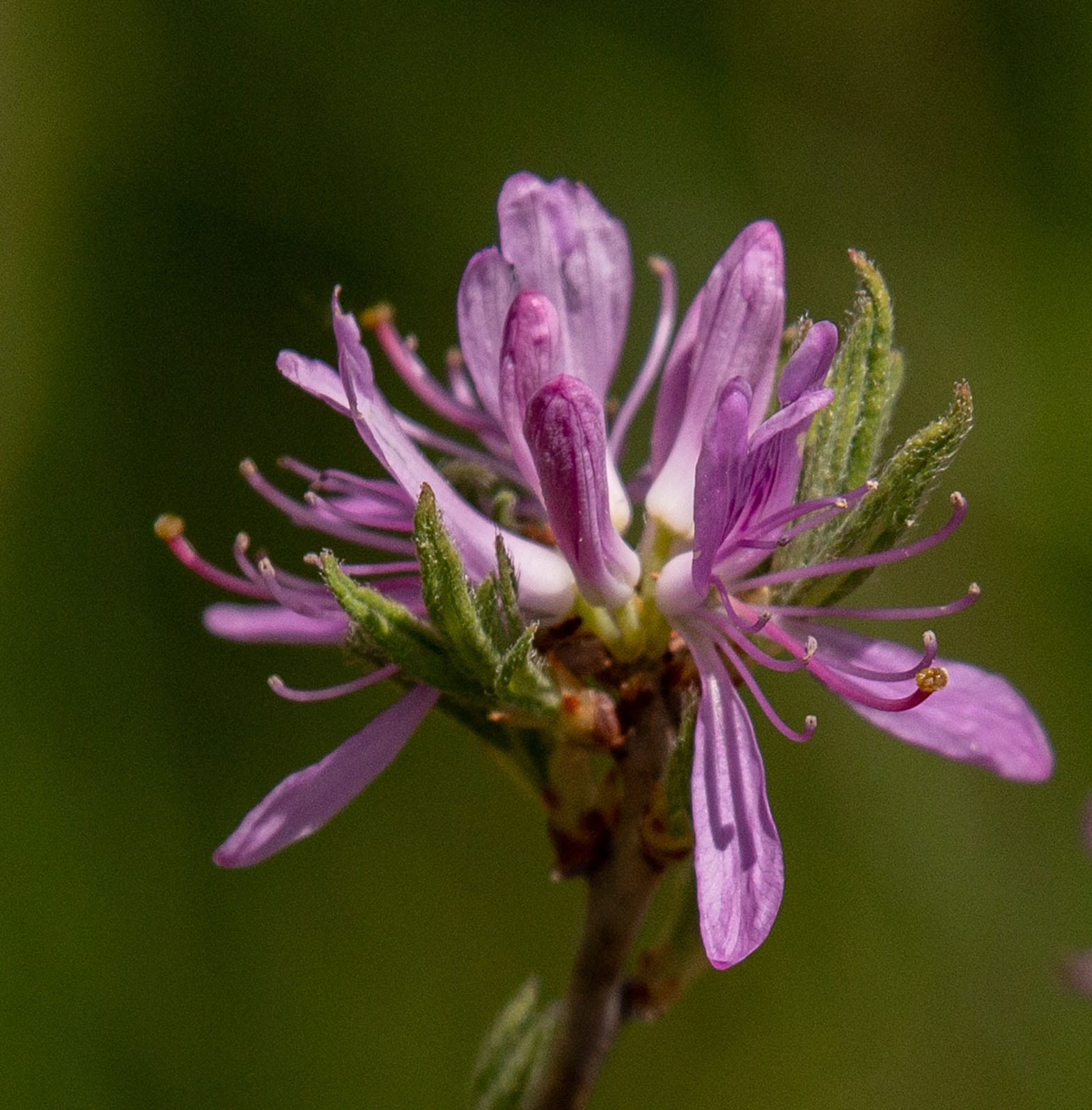
Arabellea Dane: Rhododendron canadense
Photographer: Arabellea Dane, Chair of The Boston Committee of the Garden Club of America
Photograph: Rhododendron canadense, Quincy Bog, Plymouth/Rumney, New Hampshire
The Rhododendron canadense is one of my favorites of the spring bloomers, and this year in the Bemis Thompson Sanctuary watching it go from bud to bloom after our Covid year and my hubby’s health issues was especially exciting. To see all our treasured local native plants growing so beautifully in their habitats is just the best, isn’t it?
Judges’ Comments: Wow, now that’s a “portrait.” Rhodora flowers – captured in many stages of unfurling – completely open, halfway, still a bud – signaling their intention and teaching patience. All capture my attention. Keen eye and wonderful capture by the photographer.
Plant Species – 1st Place Winner (Tie)
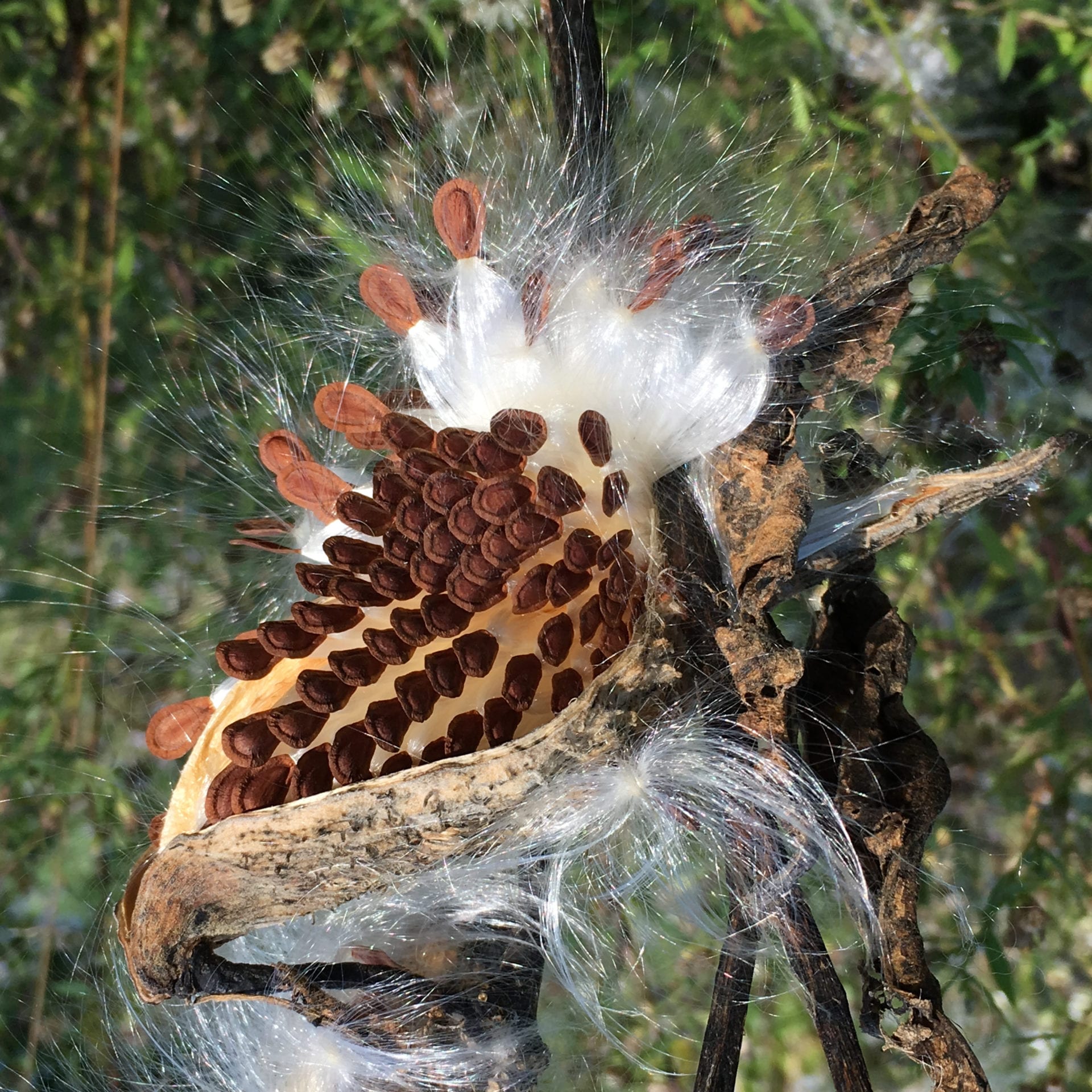
Tess Grasswitz: Asclepias syriaca seed stages
Photographer: Tess Grasswitz, professional entomologist specializing in insect ecology and organic approaches to pest management
Photograph: Asclepias syriaca seed stages, Montezuma National Wildlife Refuge near Seneca Falls, NY
I love the intricate patterns that Nature creates—especially those that are only apparent at close range. On this occasion, I was lucky enough to catch this milkweed pod just as it was opening, when the pattern of the developing seeds inside could be clearly seen for just a brief time before they all took to the air: magical!”
Judges’ Comments: This image explores the glorious exuberance of milkweed’s seed stage. Great capture showing the bursting dried fruit overflowing with seeds – some standing up ready to take flight, others remain tucked in neat rows, waiting their turn. Lots of textures displayed, from the rigid edges of the pod to the silky, fluffy coma. After milkweed spends their summer feeding everyone from beetles to ants to caterpillars to butterflies, supporting an ecosystem from their blooms and their leaves and their stems, this is their moment of success. The next generation, ready to ride the breeze to a new patch of soil and start the cycle all over again. It is a moment worth celebrating and this image captures it beautifully.
Plant Species – Honorable Mention
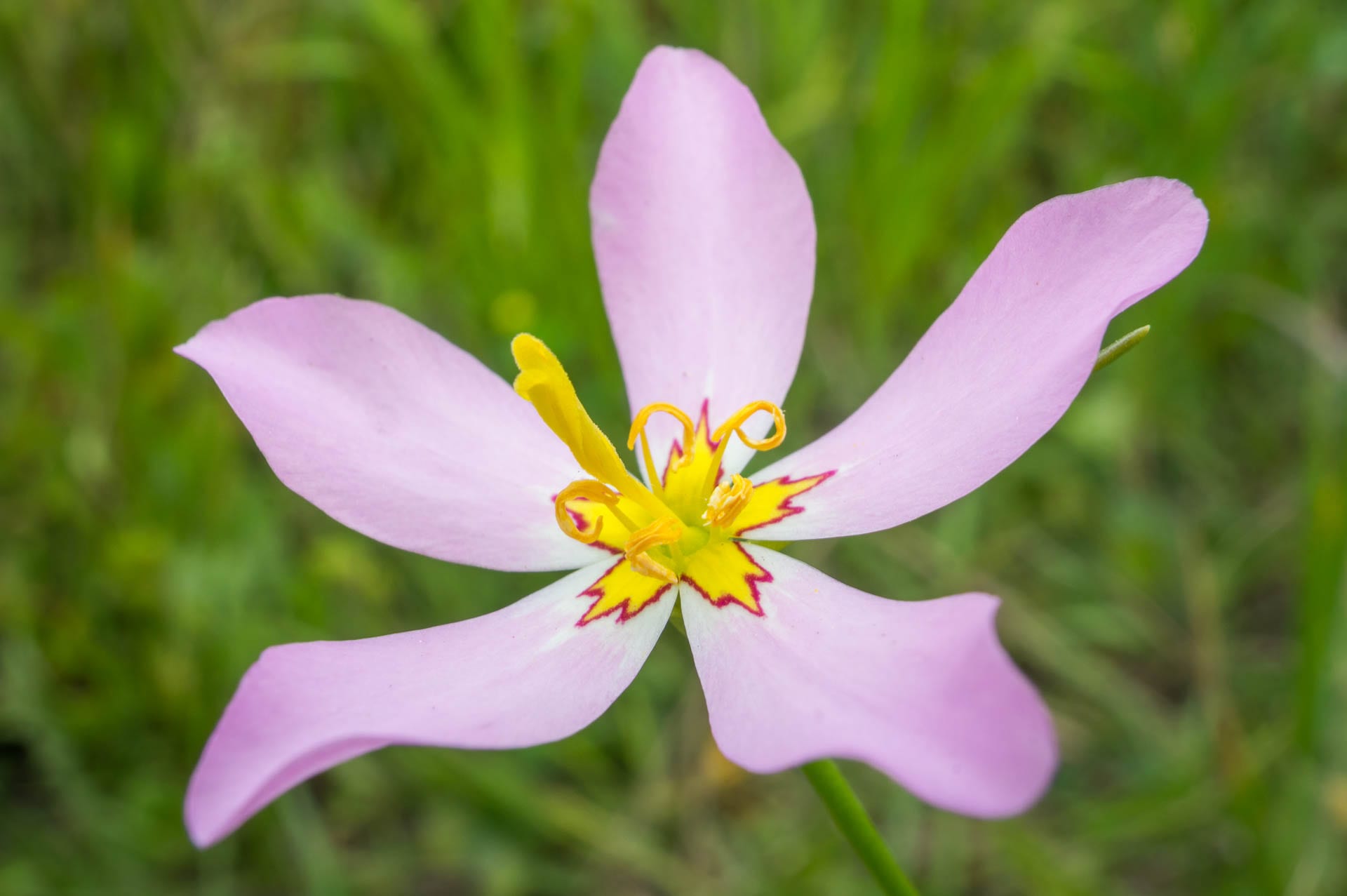
Nash Turley: Sabatia grandiflora
Photographer: Nash Turley, Postdoctoral Researcher, Penn State University, www.nashturley.org
Photograph: Sabatia grandiflora, Orlando Wetlands Park, Orlando, Florida
The spiky yellow star outlined in red in the center of Sabatia grandiflora flowers is a lovely detail that could be missed if viewing them from a distance, almost like a flower within a flower. I spotted this one growing in a wet ditch on a bright and sunny spring day in Central Florida.
Judges’ Comments: Mother Nature is an artist! A truly stunning photograph. A beautiful contrast of colors and striking detail surrounding the stamen.
Plant Species – Honorable Mention
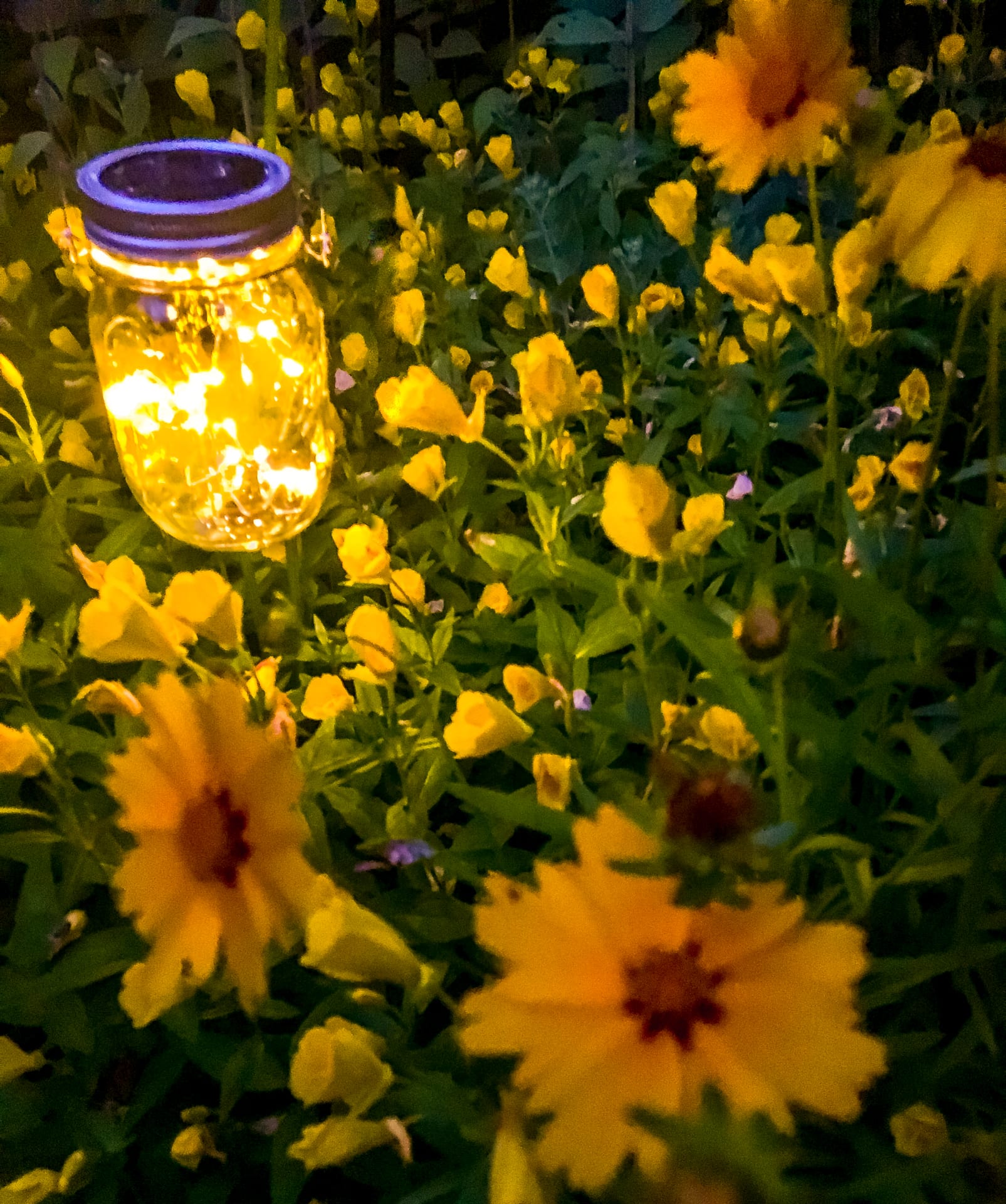
Jerry Harris: Oenothera biennis
Photographer: Jerry Harris
Photograph: Oenothera biennis, Lexington, Massachusetts
The light is one of several solar-powered fairy lights in our garden. I took this photo with my phone while on an evening stroll through the garden.
Judges’ Comments: This photo elicits emotion – the warm, peaceful feeling of sitting in one’s garden at night. It evokes sweet memories of childhood – running barefoot on the lawn, watching fireflies blink, not a care in the world. Great job by the photographer to capture all that in one still photo! A solar light with two very easy-to-grow native flowers is also something that is easy to try at home. Perhaps this pretty picture will encourage gardeners to add a few more native plants to their space.
Pollinators and Native Plants – 1st Place Winner (Tie)
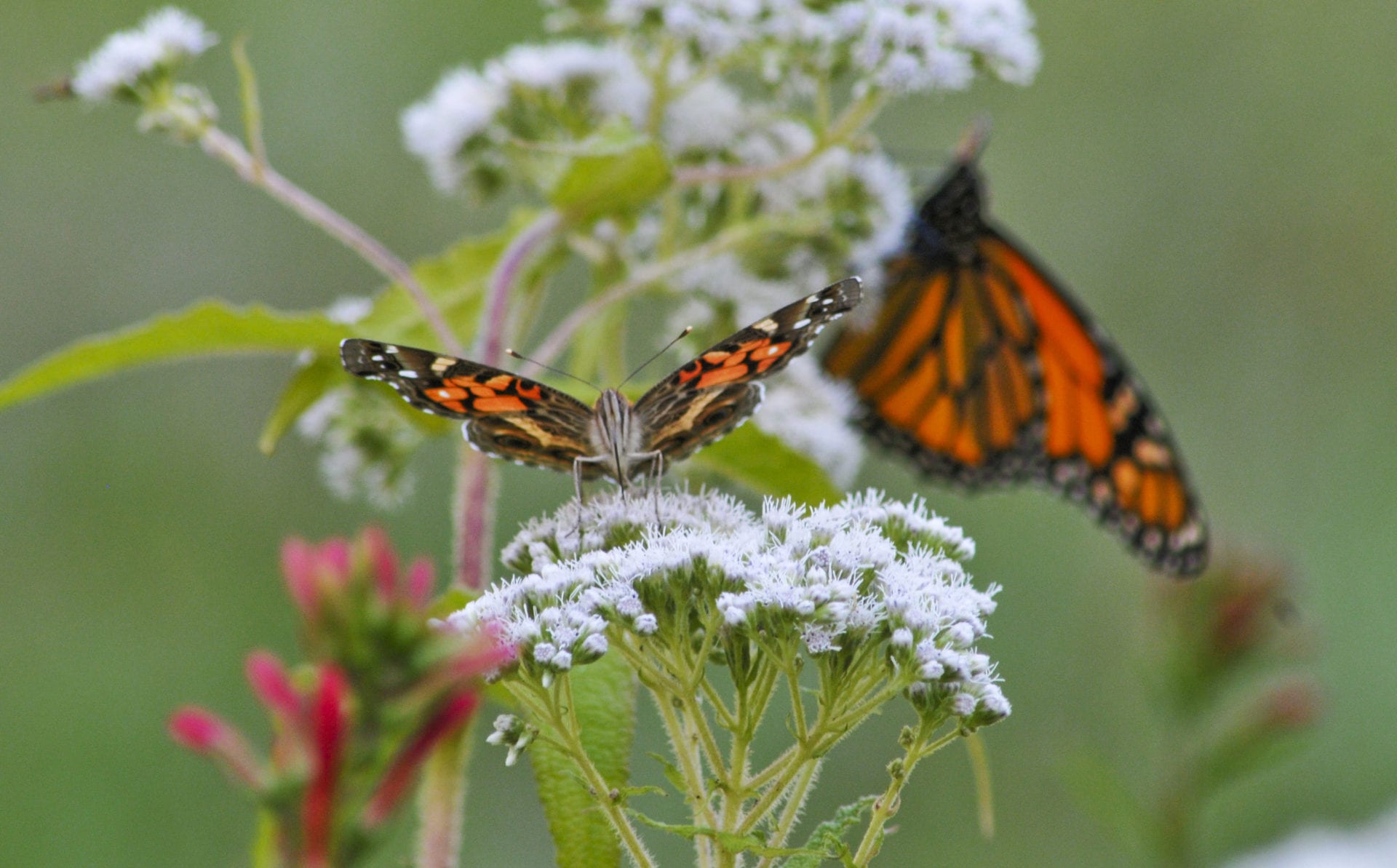
Allan Amioka: Eupatorium perfoliatum
Photographer: Allan Amioka, Freelance Graphic Designer
Photograph: Eupatorium perfoliatum with two butterfly species, South Berwick, Maine
Slightly overcast conditions in early autumn provided even lighting for this composition. This American Lady Butterfly perched on Eupatorium perfoliatum was framed by the muted forms and colors of the Monarch and Lobelia cardinalis.
Judges’ Comments: The Monarch in the background and the red buds in the foreground, both just out of focus, add depth and also direct the eye to the pollinator taking center stage. The unique angle of the American Lady captured by the photographer is what put this winning photo over the top. Timing can be everything when it comes to capturing moments like this. Planting native species, which encourage pollinators to hang around for a few moments longer while they feed from preferred nectar sources, does make capturing photos like this far more possible, but it still takes a combination of skill and luck to come home with such a lovely composition.
Pollinators and Native Plants – 1st Place Winner (Tie)
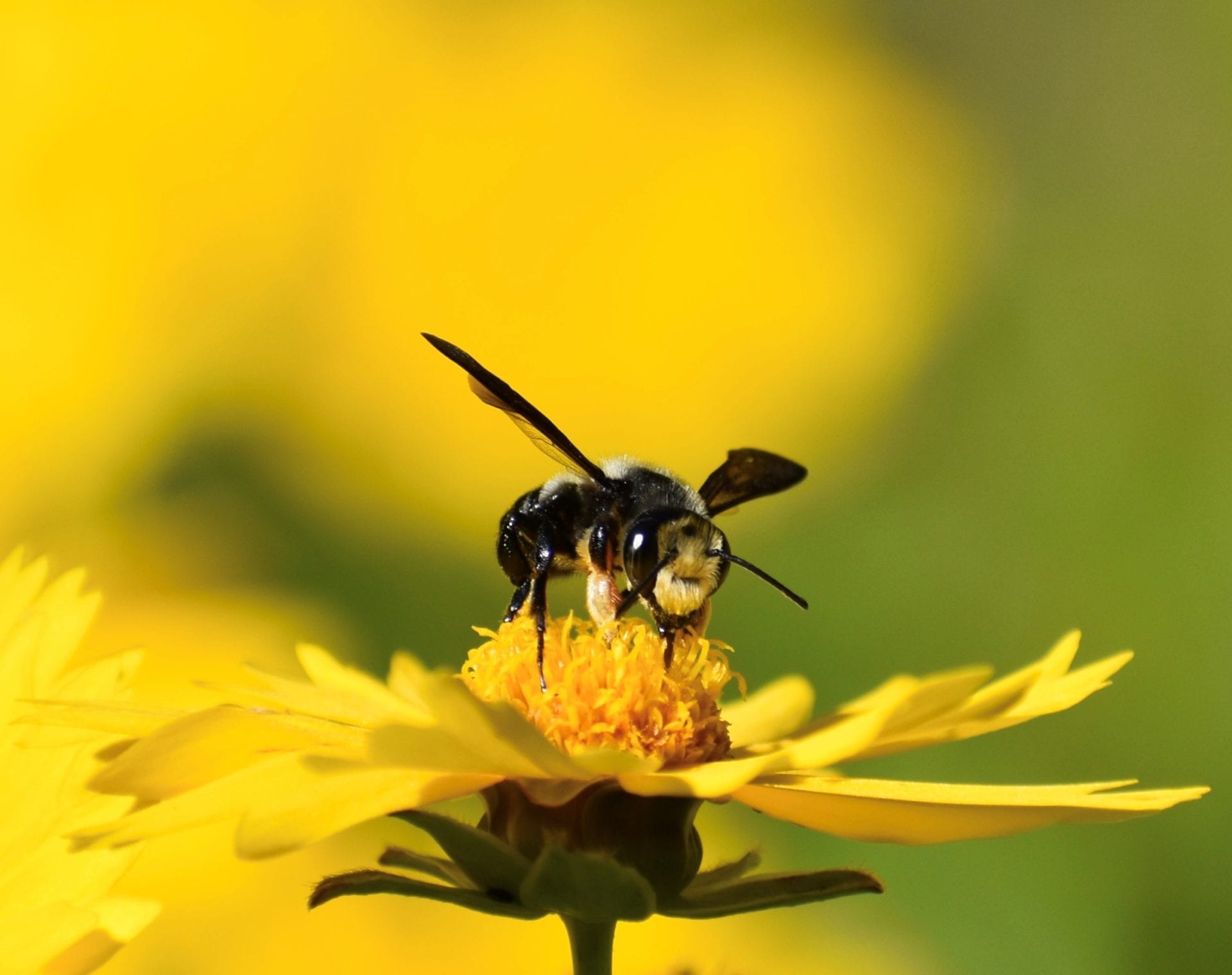
Joelle O’Daniel-Lopez: Helianthus angustifolius (previously Coreopsis angustifolius) with Leafcutter Bee
Photographer: Joelle O’Daniel-Lopez
Photograph: Helianthus angustifolius (previously Coreopsis angustifolius) with Leafcutter Bee, Escambia County, Florida
One of my favorite activities is observing pollinators and photographing life in my garden in Escambia County, Florida. The genus Coreopsis is Florida’s state wildflower. This variety of lance-leaved coreopsis is a favorite for little native bees including this male carpenter-mimic leaf-cutter bee.
Judges’ Comments: Stunning image! The bee is in perfect focus, juxtaposed with a yellow backdrop; it immediately captures attention. As the eye explores the photo, the details of Helianthus become evident. Excellent capture by the photographer – light, subject, composition – a winning photo of a native plant and pollinator.
Pollinators and Native Plants – Honorable Mention
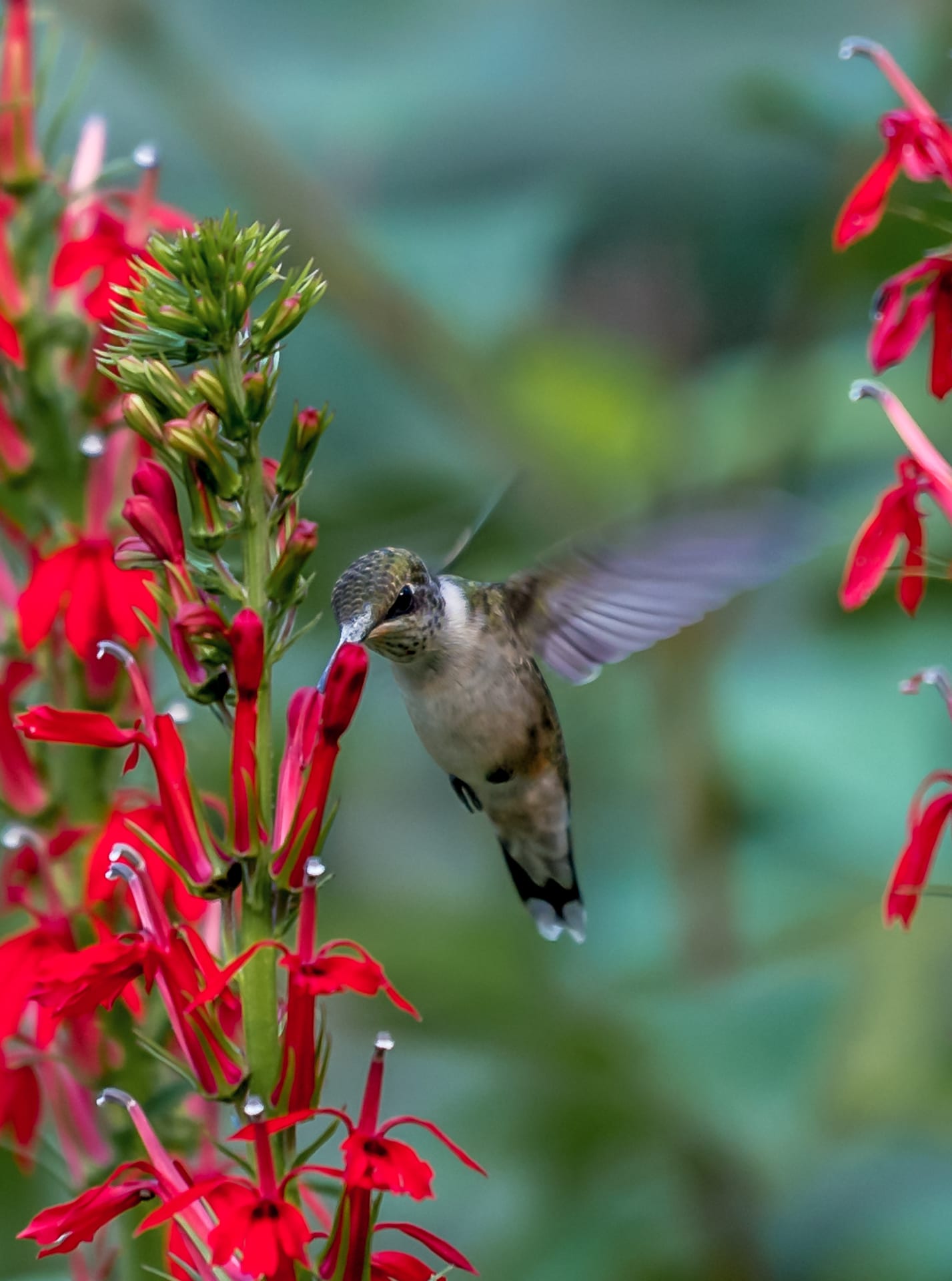
Jerry Harris: Lobelia cardinalis with hummingbird
Photographer: Jerry Harris
Photo: Lobelia cardinalis with hummingbird, Lexington, Massachusetts
The hummingbird started visiting our yard a few years ago. I tried several times to capture a good photograph of the bird and was finally successful. I’m happy to report it’s returned again this year.
Judges’ Comments: A great photograph of a Hummingbird in action enjoying the Lobelia. The sharp focus of the hummingbird in flight reveals the intention and determination on the hummer’s face as it sips nectar from the Cardinalis
Pollinators and Native Plants – Honorable Mention
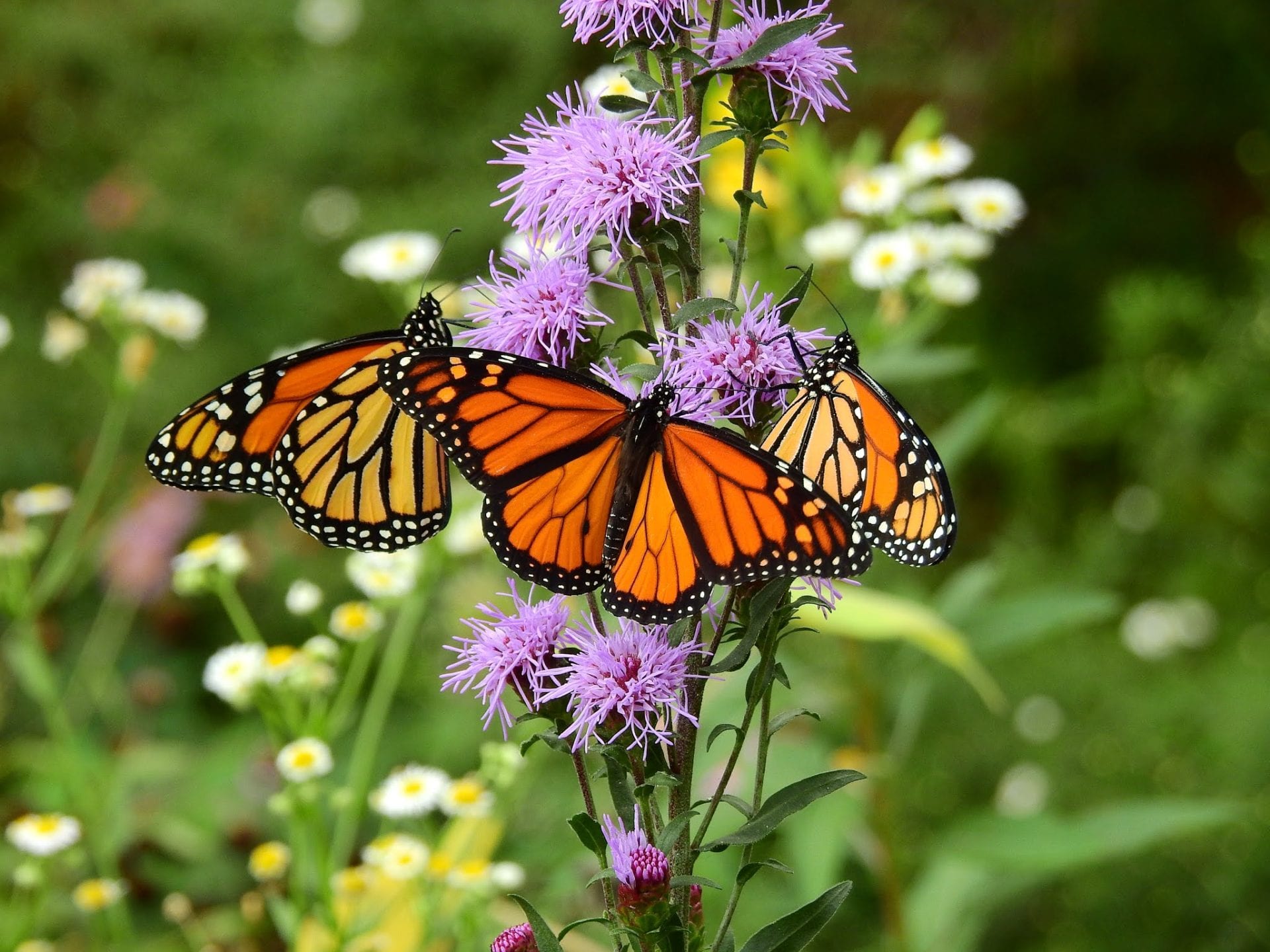
Yael Weiss: Liatris ligulisylis
Photographer: Yael Weiss, Park Ecologist, Bethpage State Park
Photo: Liatris ligulisylis, Farmingdale, New York
When in bloom, Liatris ligulistylis is the star of any pollinator garden; this can be said not just for its striking floret pattern bursting with rich color, but also for the fact that Liatris ligulistylis is an outstanding host plant. On the day this photo was captured, I saw over a dozen Monarch butterflies feeding on this one plant species (a majestic and mesmerizing sight)!
Judges’ Comments: Monarch magnet! A great photo featuring the power of natives to attract pollinators. The photographer captured the perfect moment when the center Monarch opened its wings to show-off its brilliant orange and black colors, while the two side Monarchs showcased their more subdued orange and yellow tones of the underwing – all contrasting beautifully with the serene purple colors of the Liatris and in full focus against the greens, whites, and yellows of the Erigeron in the background. The visual image fills the entire frame creating a richness and feeling of fullness, which is a nice contrast to photographs that zero in on a single subject at the expense of their surroundings.
About the Judges
Becky Laboy is the full-time Education Outreach Specialist with Ocean County Soil Conservation District in New Jersey. She holds an MA in Education, BS in Biology, BA in International Relations, Teaching Certificates in NJ and CA, Rutgers Organic Land Care Certificate, Rutgers Green Infrastructure Champions Certificate, and Horticultural Certificate from Brooklyn Botanic Garden. Becky also works part-time in several capacities: as an adjunct professor at Kean University, as an instructor for the Barnegat Bay Volunteer Master Naturalist course through Ocean County College, and she leads birding tours with Ocean County Parks and Recreation. She enjoys landscaping her own three-acre property in suburbia to attract and support birds and strives to inspire others to make small but positive changes in home landscaping practices that benefit both wildlife and humans.
Sundaura Alford-Purvis has been an avid gardener for over 30 years and has worked in the horticultural world for over 20, much of that time spent working as a landscape designer. These days her focus has shifted from working with people to modify landscapes and plant communities to working with land and plants to help people develop care-centered relationships with the rest of the ecosystem.
Richard Rappleyea is the President and co-owner of Central Jersey Landscaping and Rappleyea’s Nursery. He has a degree in Ornamental Horticulture from Rutgers University. The business was established in the early 1970s. The landscape contracting business focuses on commercial projects, and the nursery specializes in flowering shade trees and evergreens.
***
All photographs remain the property of the photographer. By entering their photographs, contestants grant reprint permission to ELA. Photographs may be used for displays, publications, or education purposes of ELA. Photographers will be credited with each use.
Right to reproduce or disseminate all material herein, including to Columbia University Library’s CAUSEWAY Project, is otherwise reserved by ELA. Please contact ELA for permission to reprint. Mention of products is not intended to constitute endorsement. Opinions expressed in this newsletter article do not necessarily represent those of ELA’s directors, staff, or members.
Mention of products is not intended to constitute endorsement. Opinions expressed in this newsletter article do not necessarily represent those of ELA’s directors, staff, or members.

